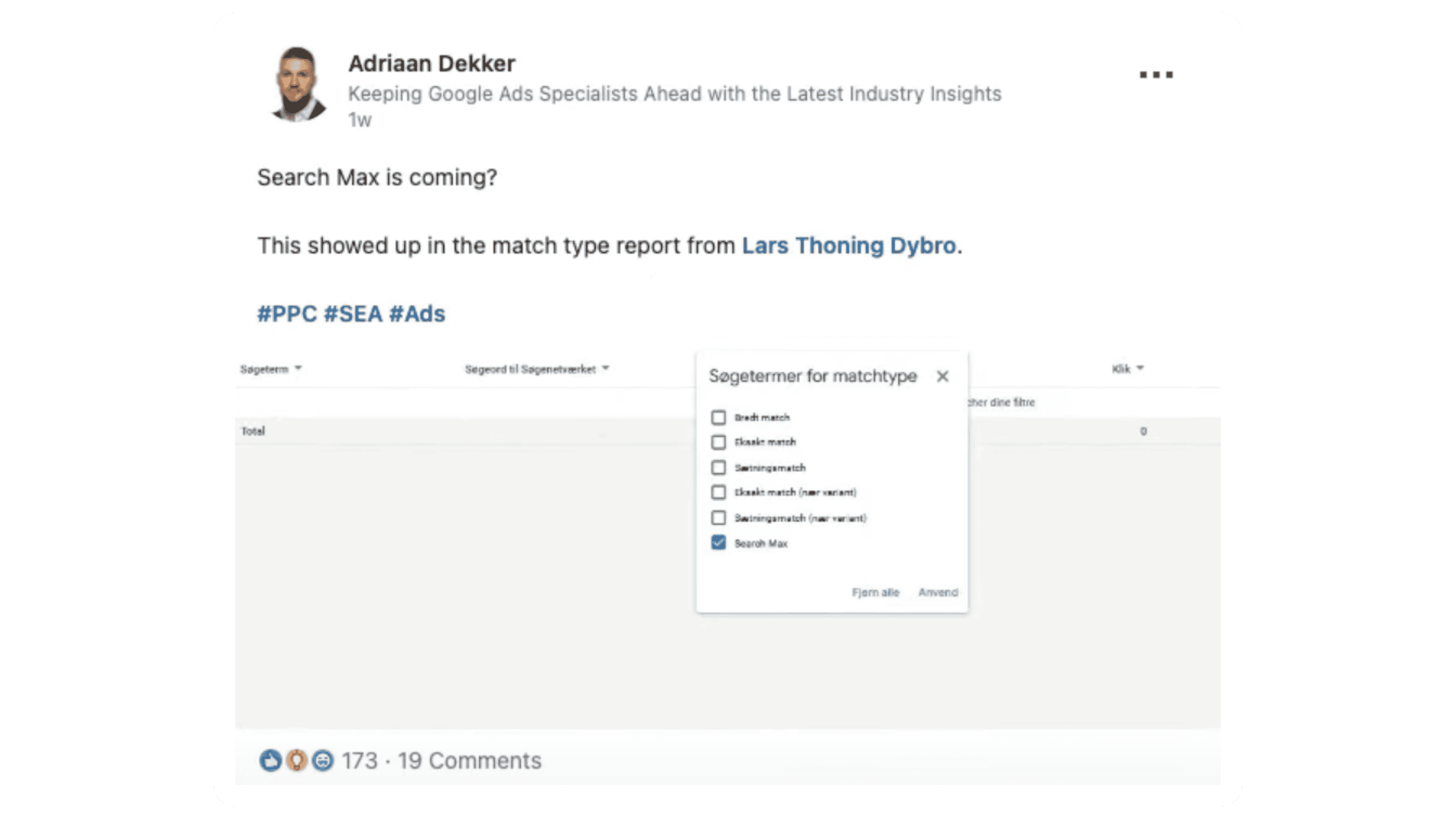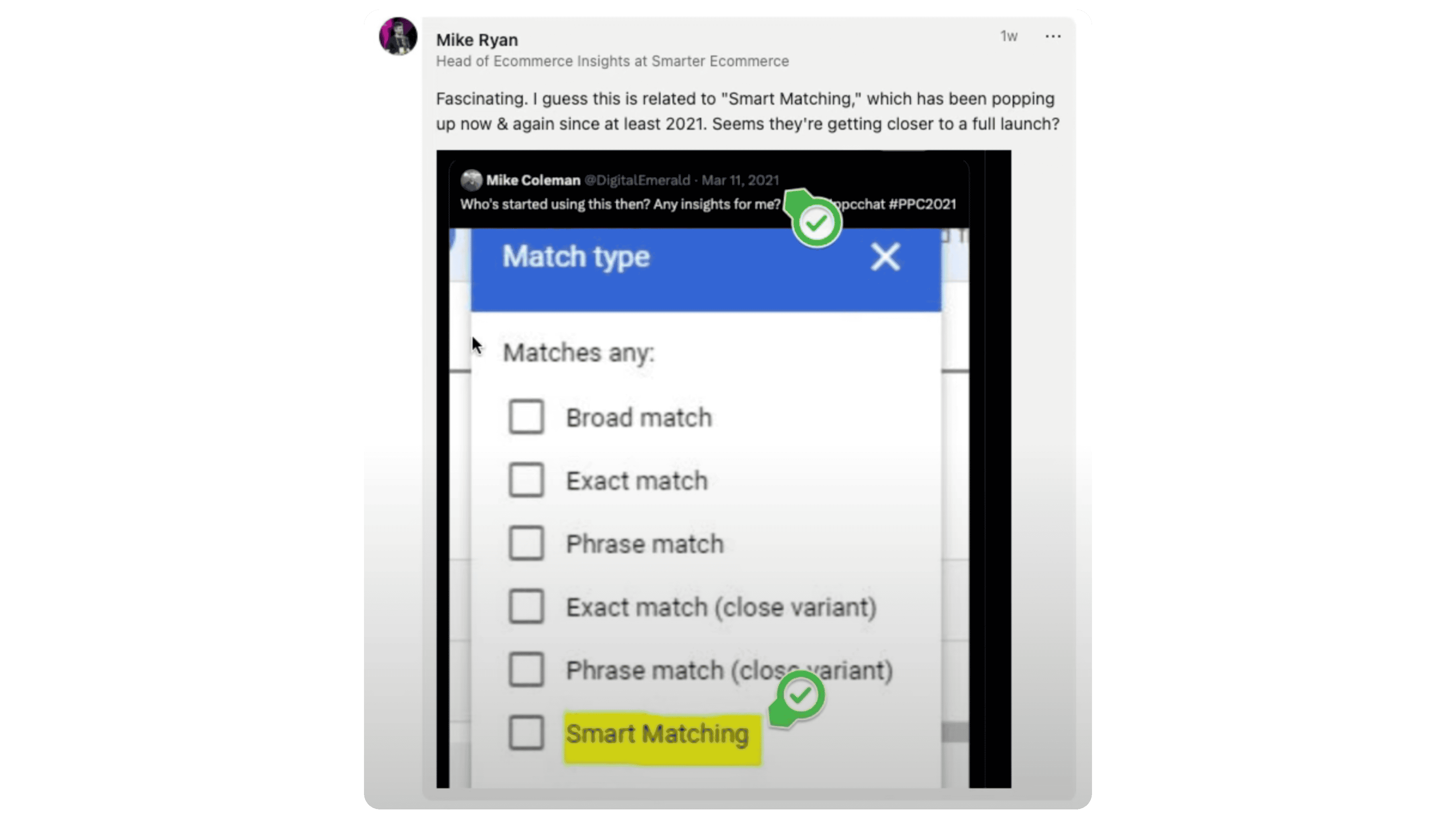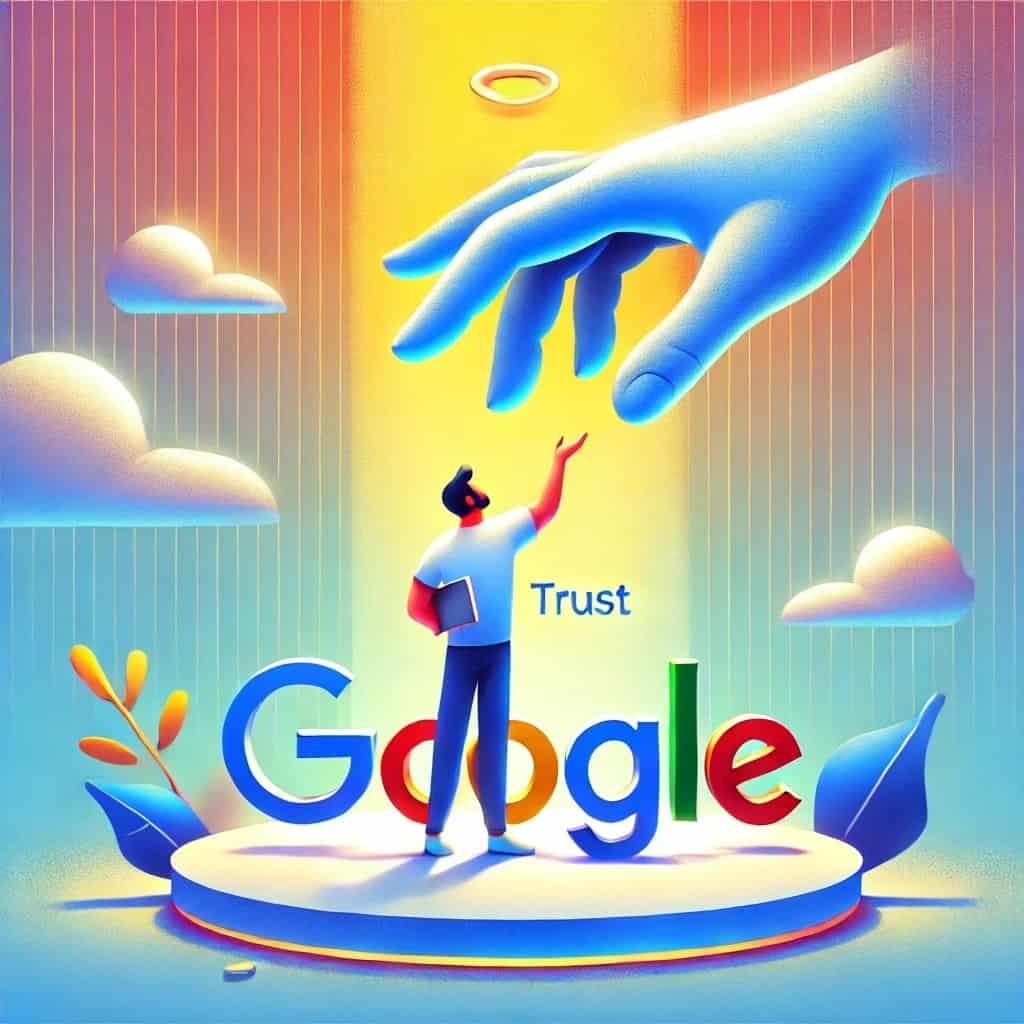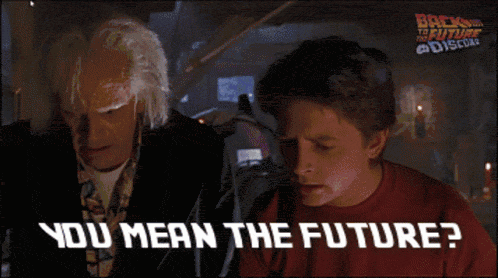Just when you thought you had Google Ads figured out, a new potential feature named “Search Max” has emerged on the horizon, sending waves of curiosity — and concern — across the advertising community.
So, what’s the fuss about, and should you be concerned? In this post, we’ll explore everything you need to know about Search Max in Google Ads. Prefer video? Check out our video This Could Change Google Ads Forever:
Still with us? Good, let’s dive in.
What Exactly is Google Ads ‘Search Max’?
Recently spotted by eagle-eyed advertisers (and highlighted by Adriaan Dekker on LinkedIn and discussed in Search Engine Land), “Search Max” appears to blend traditional search term matching with advanced text and URL optimization to drive higher conversions and greater reach.

But here’s the strange thing: Search Max doesn’t look like a new campaign type at all. Instead, it seems to be a novel keyword match type alongside the familiar three keyword match types: broad match, exact match, and phrase match types in Google Ads.
When you look closely at the screenshot above, it’s clear that Search Max appears in the same selection menu as traditional match types in Google. While the image is in a different language, you can clearly see “broad match,” “exact match,” and then “Search Max” listed as options — suggesting this is an additional match type (rather than an entirely new Google Ads campaign format).
Has Anyone Actually Seen This?
Despite the buzz, it’s important to clarify that Search Max remains elusive. Many seasoned advertisers — including us — report that they haven’t encountered this new match type in any Google Ads accounts.
Notably, Mike Ryan, Head of eCommerce at Smarter Ecommerce, suggests this might resemble the obscure “smart matching” feature seen sporadically since 2021.

This inconsistency in sightings raises questions about whether Search Max is in limited testing, gradually rolling out, or simply a temporary feature that appeared briefly before being pulled back.
Google’s Automation Evolution: A Historical Perspective
To understand the potential significance of Search Max for Google Ads advertisers, we need to consider Google’s steady march toward automation over the years:
Manual Keywords Era (Early 2000s-2010s): Google Ads (formerly AdWords) began with highly manual keyword targeting, match types, and bidding.
Smart Bidding Introduction (2016-2018): Google shifted toward automated bidding strategies like Target CPA and Target ROAS.
Match Type Expansion (2018-2021): Google expanded the reach of exact match and phrase match keywords, making them less “exact” and more interpretive.
Performance Max Introduction (2021): Google’s most aggressive automation move yet, bundling multiple platforms into a single campaign type with minimal advertiser control.
Potential Search Max Introduction (?): If Search Max becomes widespread, it could represent the next step in removing manual keyword control from advertisers.
Each of these steps has incrementally reduced advertiser control while increasing Google’s AI-driven decision-making in campaign management.
Why is Google (Potentially) Exploring Something Like Search Max?
It’s no secret that Google’s broader strategy involves a shift toward AI-driven automation. With developments like Performance Max campaigns — which bundle ads across different platforms into a “black box” of optimization — Google has steadily reduced advertisers’ manual control, significantly boosting its ad revenue.

Search Max could represent Google’s next major step in removing manual keyword targeting entirely, transitioning towards an intent-based system. While this promises efficiency, it could also mean less control and potentially wasted ad spend for advertisers.
Should Advertisers Be Worried?
Let’s take a step back. Every new Google Ads feature tends to spark fears of doom, but not every innovation turns out to be impactful (or even widely adopted).

Considering how poorly previous attempts at highly automated search campaigns performed for advertisers, there’s good reason for skepticism. However, advertisers should remain alert. Google’s direction is clear: automation and AI-driven features aren’t going anywhere — they’re becoming the norm.
What Does This Mean for the Future of Keywords?

The potential introduction of Search Max underscores Google’s possible intention to move entirely away from traditional keyword targeting for relevant searches toward an intent-based, AI-driven targeting model. If this happens, it could reshape how advertisers approach Google Ads forever.
What Should You Do Right Now?
For now, this is a rumor. Google may well be testing Search Max, but this is not something that has been rolled out across all accounts, and isn’t something the Grow My Ads team has seen as yet. At the moment, there is little to glean from it, other than that it could shed some light into what Google is heading toward in the future.
Here’s what we recommend doing now:
Monitor Your Accounts: Keep an eye out for any appearance of Search Max in your account settings.
Test Cautiously: If you do gain access to Search Max, test it in a controlled environment before broader implementation.
Diversify Platforms: Ensure your digital marketing strategy isn’t overly dependent on Google Ads alone.
Stay Informed: Follow industry news and Google’s official announcements for the latest developments.
Prepare for Change: Begin considering how your strategy might adapt to a more intent-based, less keyword-focused advertising landscape.
Final Thoughts
While Search Max currently remains a rumor without much in the way of official confirmation, its very existence — even as a screenshot — gives us some idea of where Google Ads might be heading. Advertisers should remain adaptable, prepared, and ready to embrace changes as Google’s AI evolution continues.



